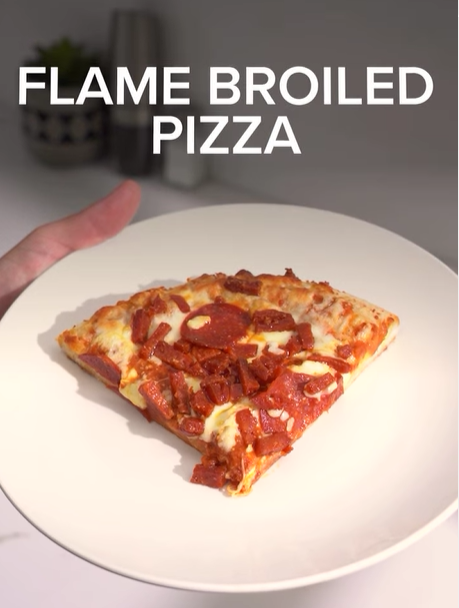Meal Planning for Busy Families: Save Time, Money, and Stress
The daily question “What’s for dinner?” can create stress that ripples throughout your entire evening, especially when busy schedules leave little time for spontaneous meal preparation. Effective meal planning transforms this daily challenge into a manageable system that saves time, reduces grocery expenses, and eliminates the mental load of constant food decisions. Far from being restrictive, good meal planning actually provides more freedom by removing daily decision-making pressure while ensuring your family enjoys varied, nutritious meals that fit your lifestyle and budget. Successful meal planning doesn’t require elaborate systems or hours of weekend preparation. The most effective approaches are simple, flexible systems that adapt to your family’s changing schedules while providing structure that prevents last-minute scrambling for dinner solutions. When done consistently, meal planning becomes a time-saving habit that improves both your family’s nutrition and your household’s overall organization. Understanding the Real Benefits of Meal Planning Many families resist meal planning because they associate it with rigid schedules or time-consuming preparation, but the actual benefits far outweigh the initial investment in developing planning habits. Time savings accumulate significantly when you eliminate daily decision-making about meals, shopping, and food preparation. The few minutes spent planning each week can save hours of daily mental energy and reduce multiple grocery store trips. Financial benefits result from strategic shopping that reduces impulse purchases while minimizing food waste. Planned meals use ingredients efficiently, often incorporating items across multiple recipes to maximize value and reduce spoilage. Stress reduction occurs when meal decisions are made during calm moments rather than rushed evening hours when everyone is hungry and patience runs thin. Having a plan eliminates the anxiety of facing empty refrigerators with no backup options. Nutritional improvements happen naturally when you plan balanced meals rather than defaulting to convenient processed foods during rushed decision-making. Planning allows time to consider nutritional variety and family dietary needs. Family satisfaction increases when everyone knows what to expect while still enjoying variety across the week. Children often respond better to meal routines, while adults appreciate the mental relief of predetermined dinner plans. Cooking skill development becomes possible when you can plan for recipes that challenge your abilities rather than always defaulting to the simplest options during time pressure. Starting Simple: Basic Meal Planning Strategies The most sustainable meal planning approaches start simple and build complexity gradually as families develop systems that work for their specific needs and schedules. Weekly planning provides the optimal balance between structure and flexibility, allowing you to consider the week’s schedule while avoiding the overwhelming complexity of longer-term planning that may not accommodate changing circumstances. Theme nights create structure while reducing decision fatigue. Designating Monday for slow cooker meals, Tuesday for pasta, Wednesday for leftovers, and so on provides framework while allowing variety within each category. Batch cooking strategies involve preparing larger quantities of versatile ingredients that can be used in multiple meals throughout the week. Cooking large batches of grains, proteins, or roasted vegetables provides building blocks for quick meal assembly. Flexible recipe rotation keeps favorites in regular circulation while introducing new options gradually. Maintain a list of family-approved meals to reference during planning sessions when creativity runs low. Season-based planning takes advantage of ingredient availability and pricing while aligning with family schedule patterns. Summer planning might emphasize grilling and fresh produce, while winter plans could focus on warming soups and hearty casseroles. Emergency backup plans prevent complete meal planning failure when unexpected schedule changes occur. Always have backup options like freezer meals, pantry-based recipes, or reliable takeout choices available. Creating Efficient Shopping Lists Strategic shopping list creation maximizes the benefits of meal planning while minimizing time spent shopping and reducing the likelihood of forgotten ingredients that derail planned meals. Store layout organization arranges your shopping list according to your preferred store’s layout, reducing shopping time while ensuring you don’t miss items located in different sections. Ingredient consolidation across multiple recipes helps you buy appropriate quantities while reducing waste. If three recipes call for bell peppers, buy enough for all three meals to use the ingredient efficiently. Staple inventory management involves checking current supplies before shopping to avoid overbuying items you already have while ensuring you don’t run out of frequently used ingredients. Bulk buying strategies for non-perishable items and frequently used ingredients can provide savings while reducing shopping frequency. Focus on items your family actually uses rather than buying bulk quantities of unfamiliar products. Price comparison habits help you recognize good deals while avoiding impulse purchases of expensive items that weren’t part of your planned meals. Track prices of frequently purchased items to identify genuine savings. Seasonal shopping takes advantage of produce availability and pricing cycles while planning meals around ingredients that are at their peak quality and affordability. Time-Saving Meal Prep Techniques Effective meal preparation goes beyond cooking entire meals in advance to include strategies that reduce daily cooking time while maintaining meal quality and family satisfaction. Ingredient prep sessions involve washing, chopping, and portioning ingredients for multiple meals during one session, reducing daily preparation time while maintaining fresh flavors in finished meals. Protein preparation strategies like marinating meats, cooking large batches of ground protein, or preparing slow cooker proteins provide ready-to-use components that speed up final meal assembly. Vegetable preparation includes washing and chopping vegetables for multiple uses, pre-roasting root vegetables, or preparing salad components that stay fresh for several days with proper storage. Grain and pasta preparation involves cooking larger quantities of rice, quinoa, or pasta that can be reheated quickly for different meals, saving cooking time while providing healthy carbohydrate bases. Sauce and dressing preparation creates flavor enhancers that transform simple ingredients into varied meals. Preparing several sauces or dressings during prep sessions provides options for customizing similar base ingredients. Storage system organization ensures prepped ingredients stay fresh and accessible while preventing confusion about what’s available for meal assembly throughout the week. Budget-Friendly Meal Planning Strategic meal planning can significantly reduce grocery expenses while maintaining nutritional quality and family satisfaction with planned approaches to ingredient selection and meal design. Loss


